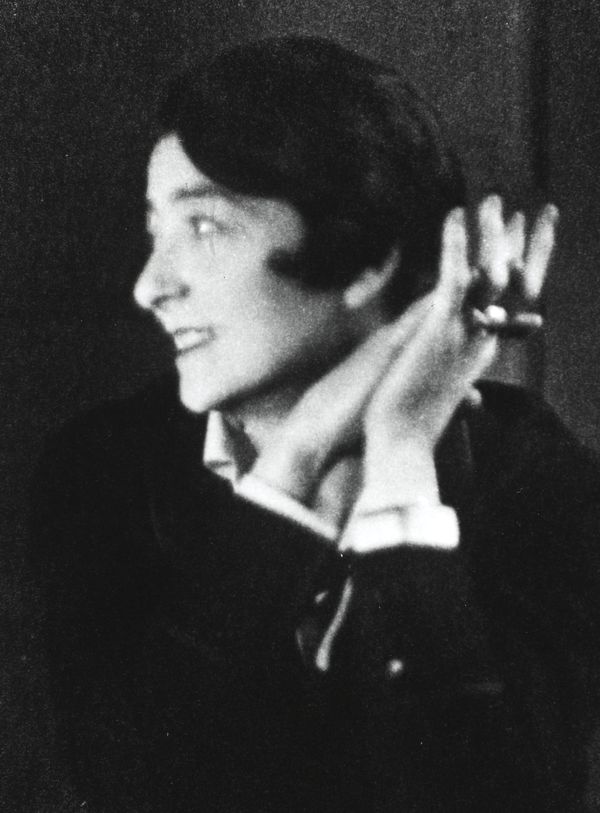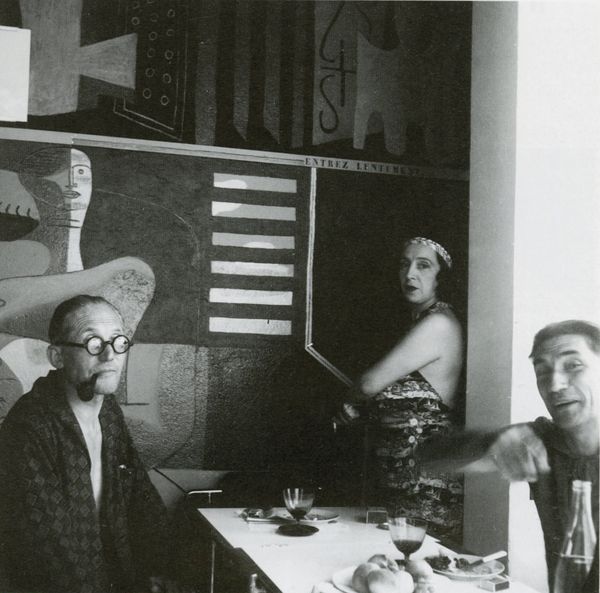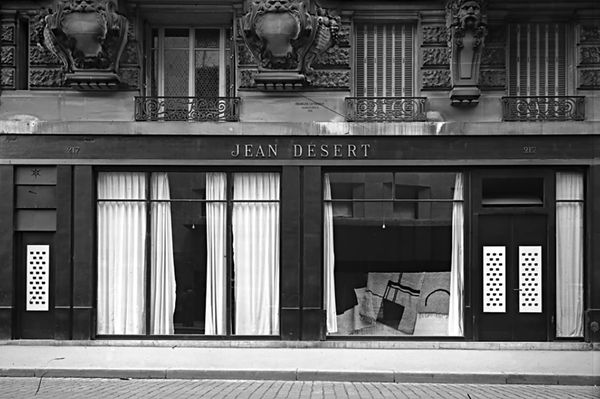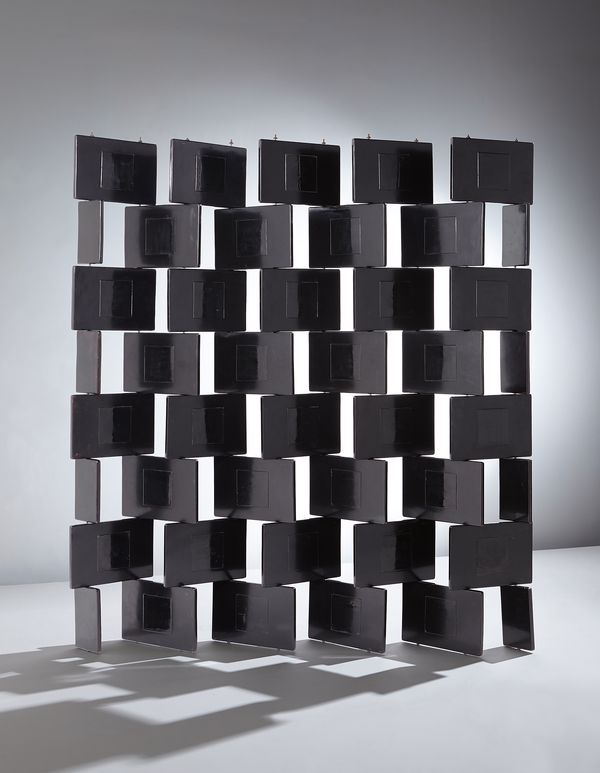Eileen Gray Important folding 'Brick' screen, circa 1925
"The screens are a revolt," declared Eileen Gray to her niece, the artist Prunella Clough, in a 1971 letter now in the National Museum of Ireland. A sharp retort to the prevailing tastes of the day, Gray’s lacquered 'Brick' screens of the 1920s eschewed Art Deco’s burly ornamentation and volumetric curves in favour of stricter geometry, an abiding interest since childhood. A high-water mark of Gray’s fervid output between the wars, her folding screens affirmed a streamlined economy more in keeping with Modernist predilections. But Gray was loath to be "absorbed" into any one movement. She bristled at the pundits of perpendicularity — Le Corbusier in particular — when she wrote, "A house is not a machine to live in. It is the shell of man, his extension...his spiritual emanation."

Berenice Abbott, portrait of Eileen Gray, Paris, 1926 © Berenice Abbott, Getty Images.
As a further rejoinder to Modernism, Gray aspired to the allure and beauty of details and rich finishes — not to their elimination — as evidenced by the use of urushi lacquer and raised central panels on either side of the important folding 'Brick' screen, circa 1925 presented here. Whereas her Modernist peers advocated a rejection of obsolete styles and timeworn methods, Gray embraced venerable traditions, notably that of Asian lacquer, which she first encountered as a fine art student at London’s Slade School in 1900. Her early interest in the medium bloomed into devotion afer she moved to Paris and met her mentor, the young Japanese lacquer artist Seizo Sugawara (1884- 1937). In subsequent decades Gray employed lacquer to masterful effect on her signature works, from 'The Lotus Table', her 1913-15 tour de force for couturier Jacques Doucet, to the Maharaja of Indore’s more starkly modern 'Transat' armchair (1930), which sold at Phillips, New York, for $1,538,500 in December 2014.

Eileen Gray, hallway for Juliette Lévy’s apartment, rue de Lota, Paris, circa 1922. © National Museum of Ireland.
Gray’s small series of freestanding 'Brick' screens from the 1920s followed from her frst major interior, a seminal commission for Paris milliner Madame Juliette Lévy. Between 1918 and about 1922, Gray designed nearly every aspect of Lévy’s apartment on the rue de Lota in the 16th Arrondissement — furniture, lighting, wall treatments, rugs, textiles. From this axis mundi of pre-war design emanated a covey of Gray’s most storied works, including the lacquered ‘Pirogue’ daybed, alert on its dozen legs, and her unique 'Dragon Armchair', its arms and base formed from two coiling serpents. The latter sold in February 2009 in the Yves Saint Laurent and Pierre Bergé collection at Christie’s Paris for €21,905,000, the highest price paid at auction for a work of twentieth-century design.
In contrast to these zoomorphic objects, Gray lined Lévy’s bedroom hallway with a series of rectangular lacquered panels set like a 'running bond' pattern of bricks, some of which projected at right angles from the wall. Gray’s practical attempt to hide the hallway’s original mouldings and to animate its fat walls owed a debt to Cubism, then still a vital movement, which she greatly admired.
The role of the artist is to anticipate the eternal movement of emotions, to express the secret relations between man and the universe.
–Jean Badovici

Le Corbusier, Yvonne Gallis and Jean Badovici at E.1027 © FLC/DACS, 2016.
Romanian critic and architect Jean Badovici (1893-1956), who befriended Gray at this fruitful juncture in her life, praised her abilities when he profiled her in a 1924 volume of L’Architecture Vivante: "The smallest details in the overall design are rigorously ordered in relation to the whole object and any useless details, which need to be eliminated, are removed." Badovici might as well have been speaking about this screen, which he owned.

Jean Désert, the shop Eileen Gray opened in 1922 on the Rue du Faubourg Saint-Honoré, Paris © National Museum of Ireland.
Gray’s first freestanding 'Brick' screens, a white pair displayed in Gray’s 'Bedroom-boudoir for Monte Carlo' at the 1923 Salon des Artistes Décorateurs, represented a sort of Cubist architecture. These nonbuilding structures, an ingenious attempt to extend the walls of the house — the 'shell of man' — and to control the emanation of both natural and artifcial light, represented an important step in her full ascension from artisan to architect, a development fully realized in her two extant masterpieces, the Roquebrune-Cap-Martin villa E-1027 (1926-29), which Gray designed for Badovici, as well as Tempe à Pailla (1931-35), her own house.
